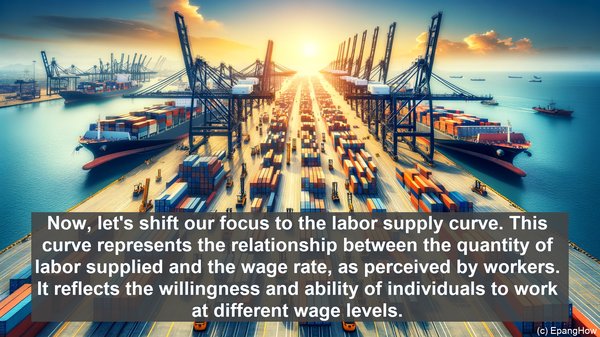Introduction to Labor Economics
Hello everyone! Welcome to this article on labor economics. Today, we’ll be diving into the concepts of the labor demand curve and the labor supply curve, and how they shape the dynamics of the labor market.

The Labor Demand Curve: Employers’ Perspective
Let’s start with the labor demand curve. From an employer’s point of view, this curve represents the relationship between the quantity of labor demanded and the wage rate. It’s important to note that, in this context, ‘labor’ refers to the number of workers or hours of work required by firms or industries.
Factors Affecting Labor Demand
Several factors influence the position and shape of the labor demand curve. These include the price of the output or service, the productivity of labor, the availability of alternative inputs (such as technology), and the overall state of the economy. For instance, during an economic downturn, firms may reduce their labor demand due to lower demand for their products or services.

The Labor Supply Curve: Workers’ Perspective
Now, let’s shift our focus to the labor supply curve. This curve represents the relationship between the quantity of labor supplied and the wage rate, as perceived by workers. It reflects the willingness and ability of individuals to work at different wage levels.
Factors Affecting Labor Supply
Similar to the labor demand curve, the position and shape of the labor supply curve are influenced by various factors. These include the population size, demographics, education and skill levels, government policies (such as minimum wage laws), and social factors (such as cultural norms regarding work).
Equilibrium in the Labor Market
The labor market reaches equilibrium when the quantity of labor demanded equals the quantity of labor supplied. This intersection point determines the equilibrium wage rate and employment level. If the wage rate is above the equilibrium level, there is a surplus of labor (unemployment). Conversely, if the wage rate is below the equilibrium level, there is a shortage of labor.
Implications and Policy Considerations
Understanding the labor demand curve and the labor supply curve is crucial for policymakers, employers, and workers. It helps in making informed decisions regarding labor market interventions, such as minimum wage adjustments, training programs, or tax incentives. Additionally, it provides insights into the potential impact of technological advancements on labor demand and the need for upskilling or reskilling.
